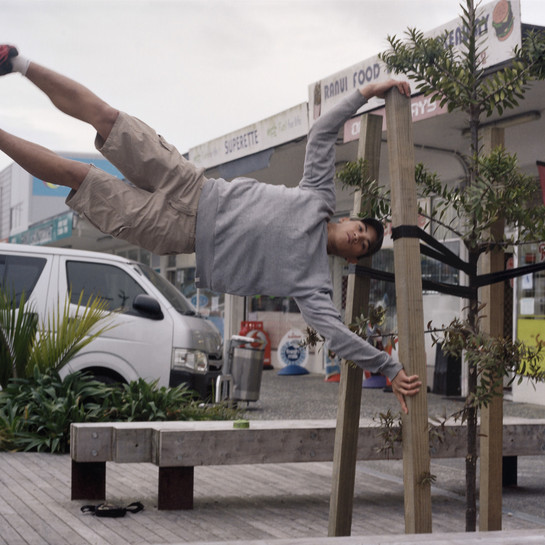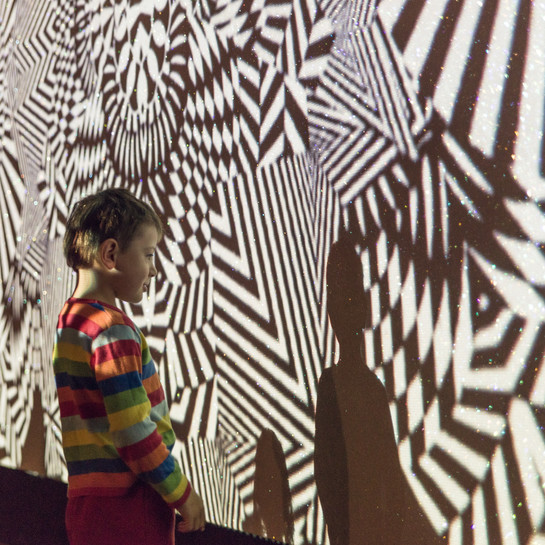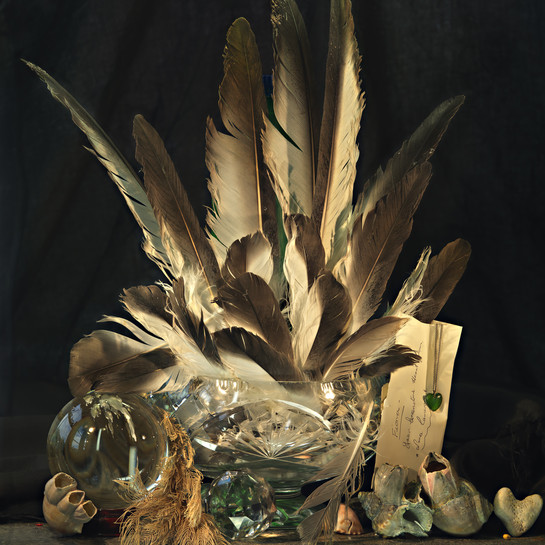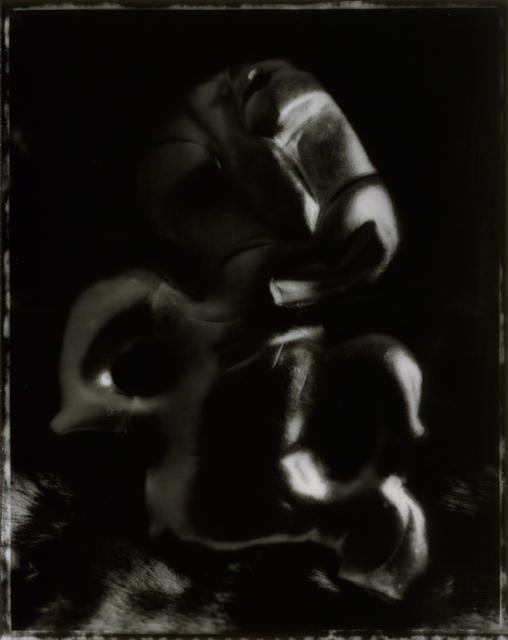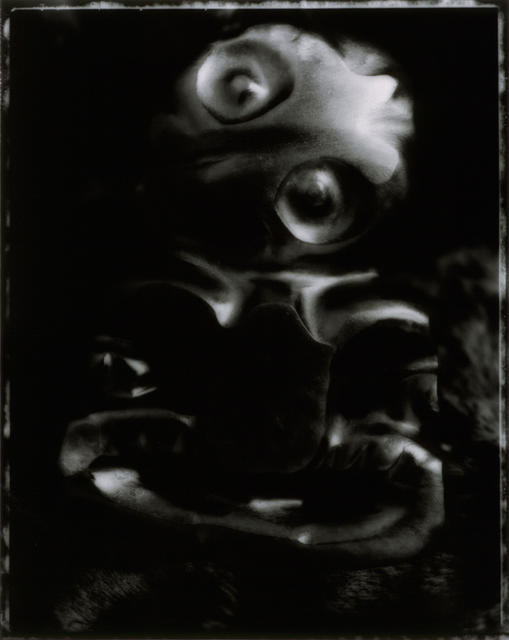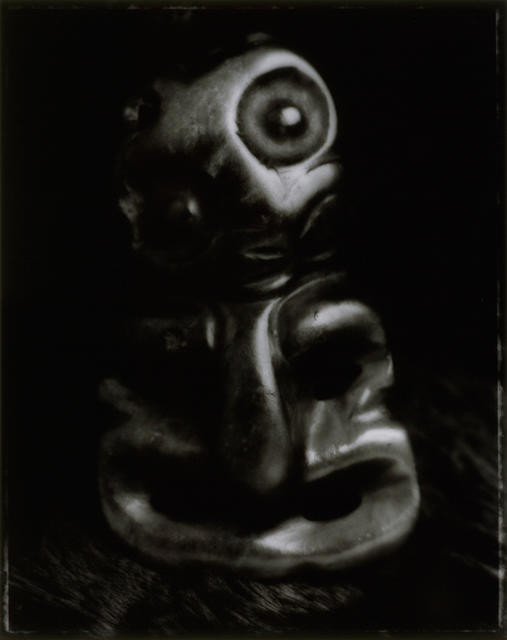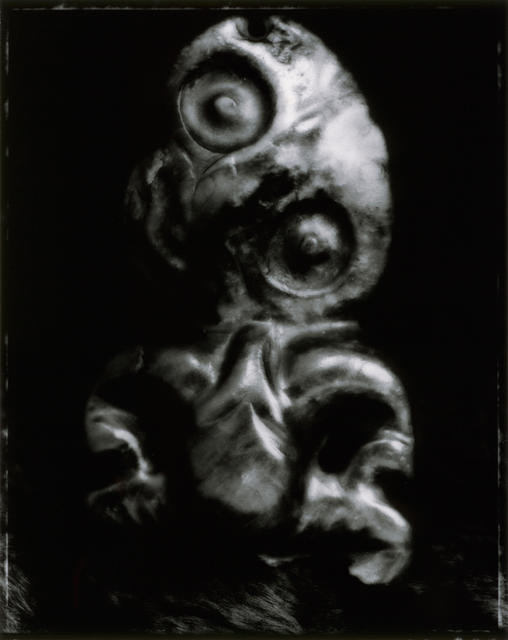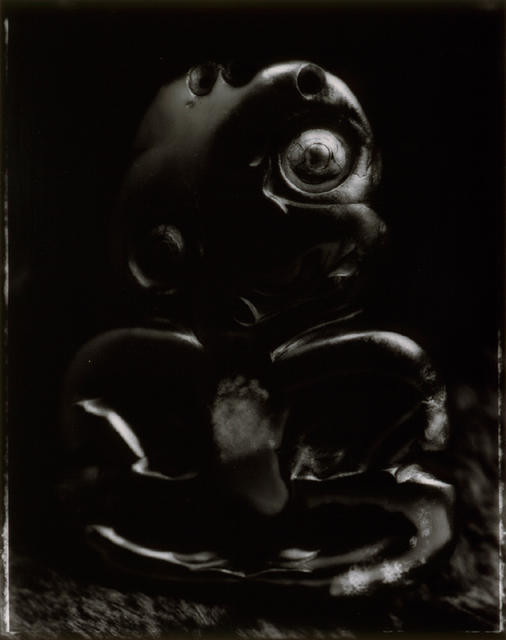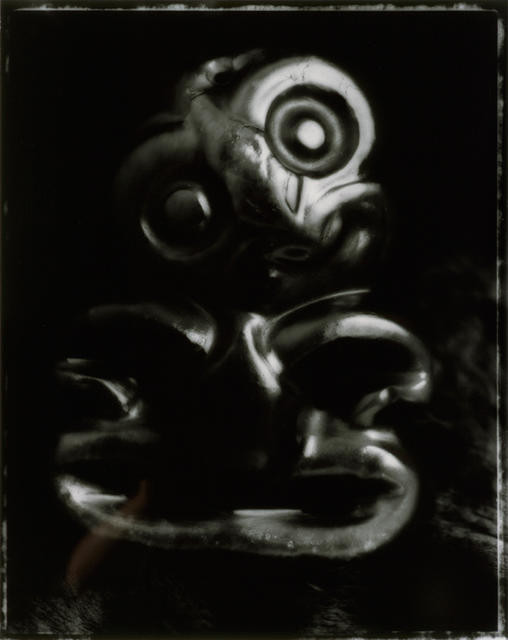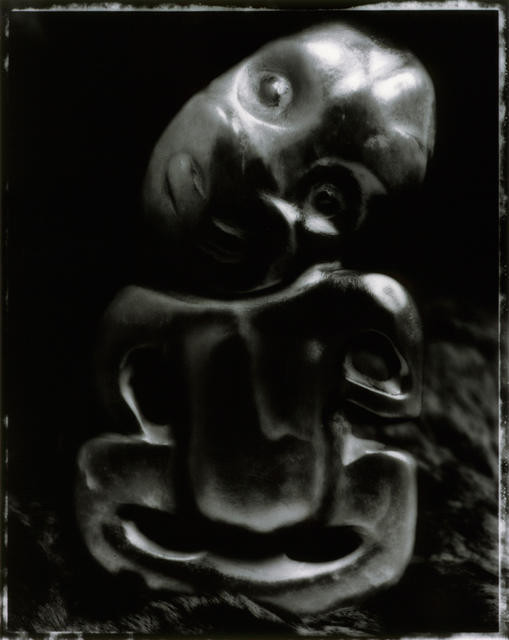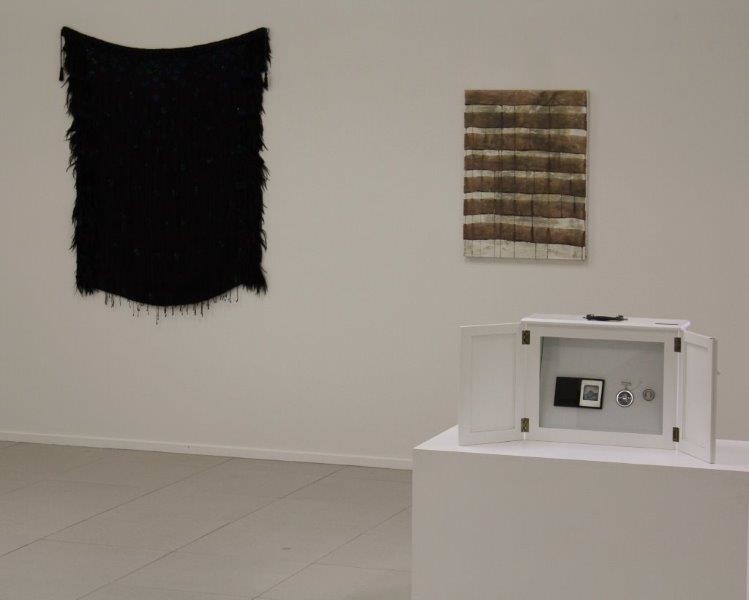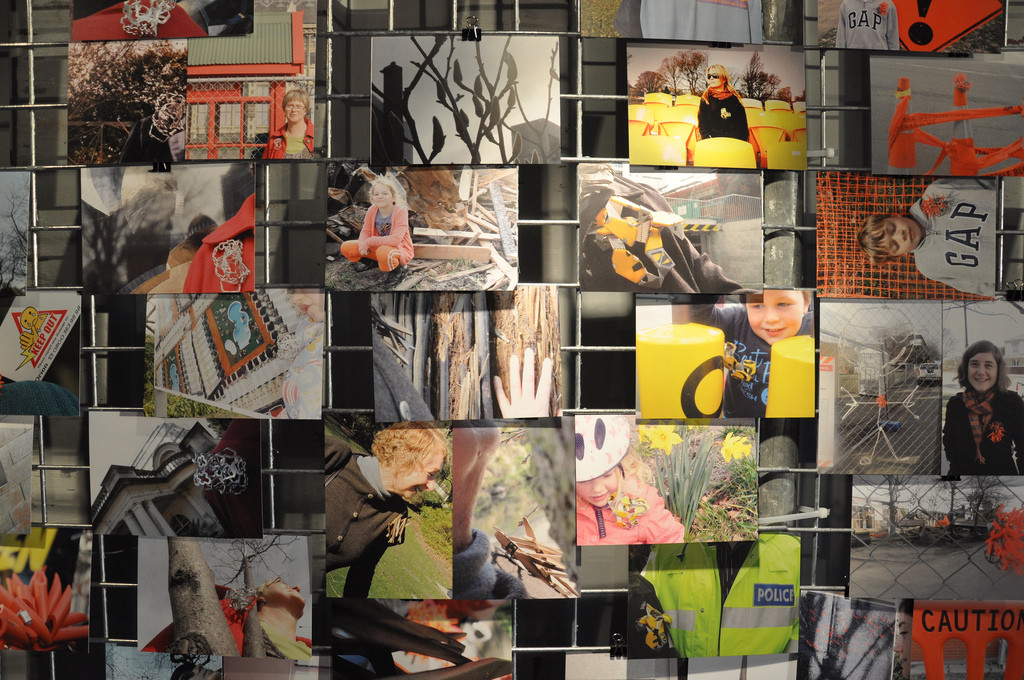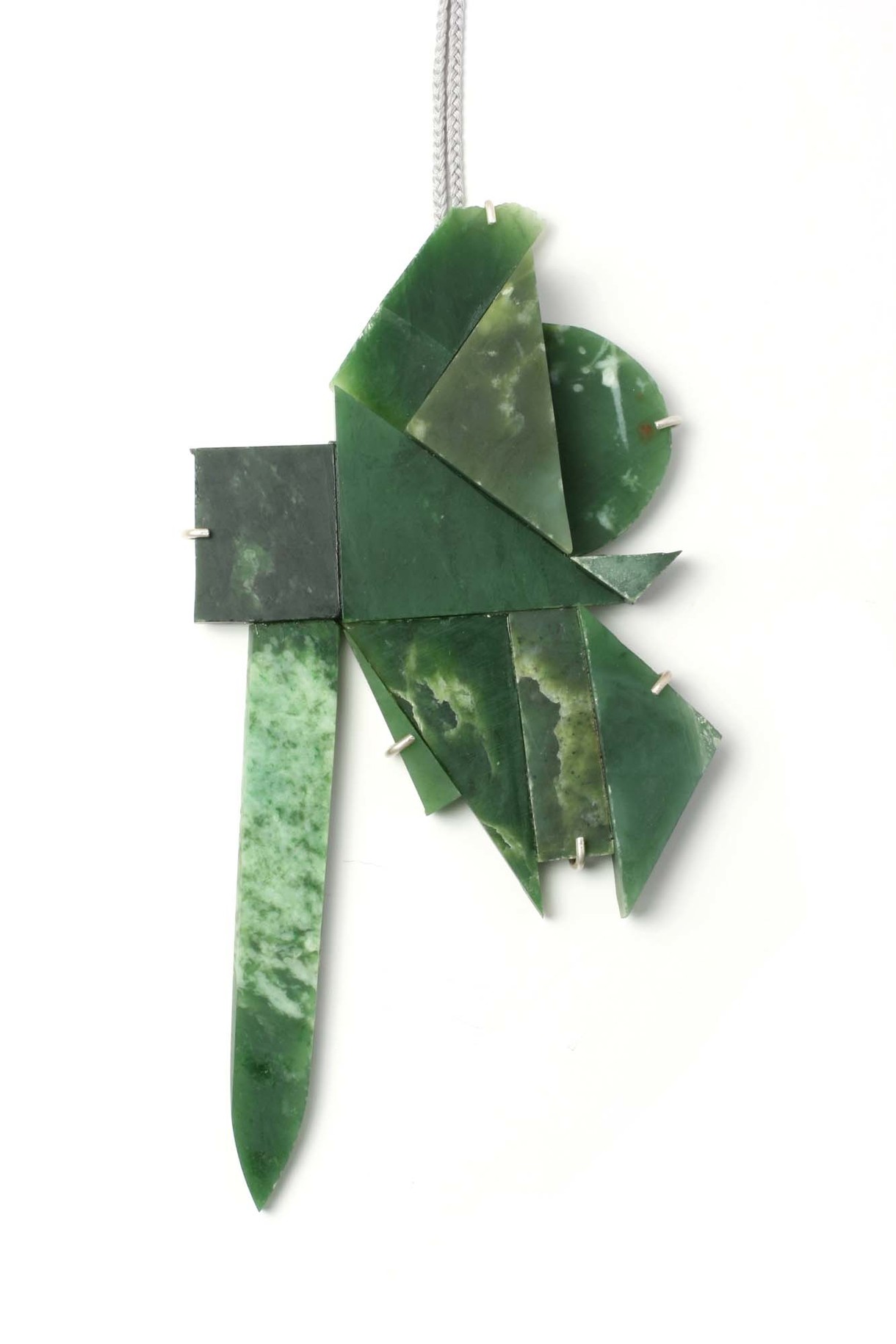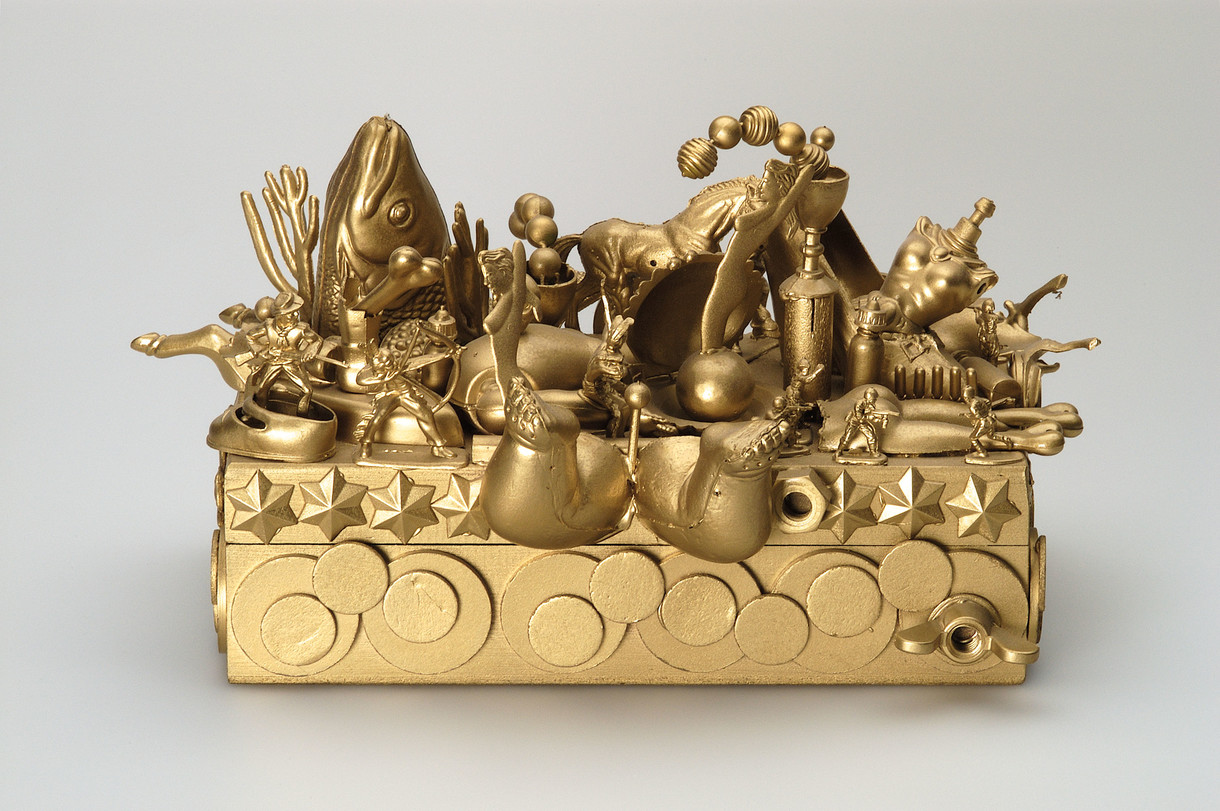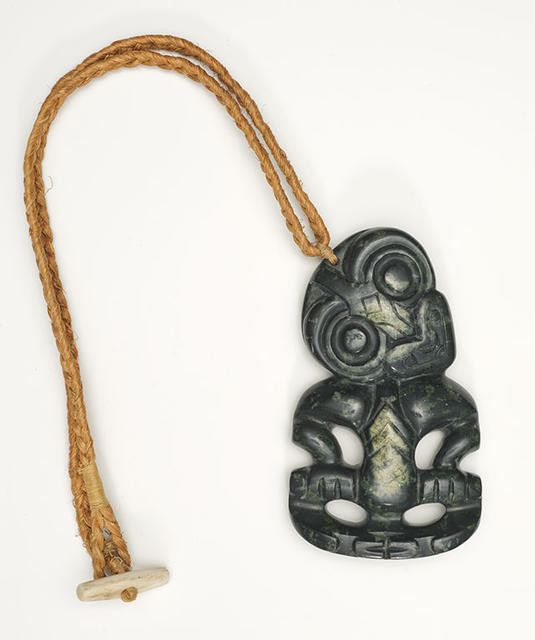Fiona Pardington
Aotearoa New Zealand, b.1961
Kāi Tahu,
Kāti Māmoe,
Ngāti Kahungunu,
Māori,
Clan Cameron,
Scottish
Mauria mai, tono ano
- 2001
- Photographs
- Purchased, 2001
- Reproduced with permission
- 870 x 730 x 30mm
- 2002/31.a-g
Tags: jades (objects), jewelry, Māori (culture or style), monochrome
The title of this work means ‘to bring to light, to claim again’. The seven heitiki (greenstone pendants) Fiona Pardington has photographed came originally from her iwi, Kāi Tahu, in Te Waipounamu. All are now held in the collection of Auckland Museum. Traditionally worn close to the heart, heitiki are sacred fertility symbols in te ao Māori, strongly associated with whakapapa (family connections across time). Fiona not only wanted to record the physical attributes of these old and precious objects, but also to capture their more intangible qualities, such as how they speak of the past and this place, despite being stored so far away.
(Perilous: Unheard Stories from the Collection, 6 August 2022- )
Exhibition History
[Now, Then, Next: Time and the Contemporary, 15 June 2019 – 8 March 2020] (https://christchurchartgallery.org.nz/exhibitions/now-then-next-time-and-the-contemporary)
The seven heitiki (pounamu pendants) in these photographs are now held by the Auckland Museum, but they came originally from Te Waipounamu / the South Island and all are connected to Fiona Pardington’s Kāi Tahu iwi. Traditionally worn close to the heart, heitiki are sacred symbols of fertility with great spiritual significance. In Te Ao Māori, the Māori world, clear divisions are not made between past, present and future, and ancestors are considered actively present. With Mauria mai, tono ano (which means to bring to light, to claim again), Pardington wanted to not only record the appearance of these old and precious taonga (treasures), but to draw out their sense of powerful connection with the past.
(Now, Then, Next: Time and the Contemporary, 15 June 2019 – 8 March 2020)
The title of this work translates from Mâori as ‘to bring to light, to claim again’. Each of the seven silver gelatin photographs depicts a Ngai Tahu heitiki (greenstone pendant) from the Auckland Museum. All from South Island locations, the heitiki are very sacred objects and it took Fiona Pardington 18 months to get permission from hapu (sub-tribes) to photograph them. Traditionally worn close to the heart, heitiki are fertility symbols and so are strongly connected with life and death.
Pardington has used an average of ten flashes for each exposure. This process recalls a Mâori idea that light is held within greenstone, suggesting that what Pardington was doing was not illuminating the heitiki, but releasing a light that was already there.
Pardington was born in Auckland. She is of Scottish and Mâori (Ngai Tahu, Kati Mamoe) descent. Since graduating with a degree in photography in 1984 from the University of Auckland, Pardington has exhibited widely and lectured on photography throughout New Zealand. She lives in Auckland.
